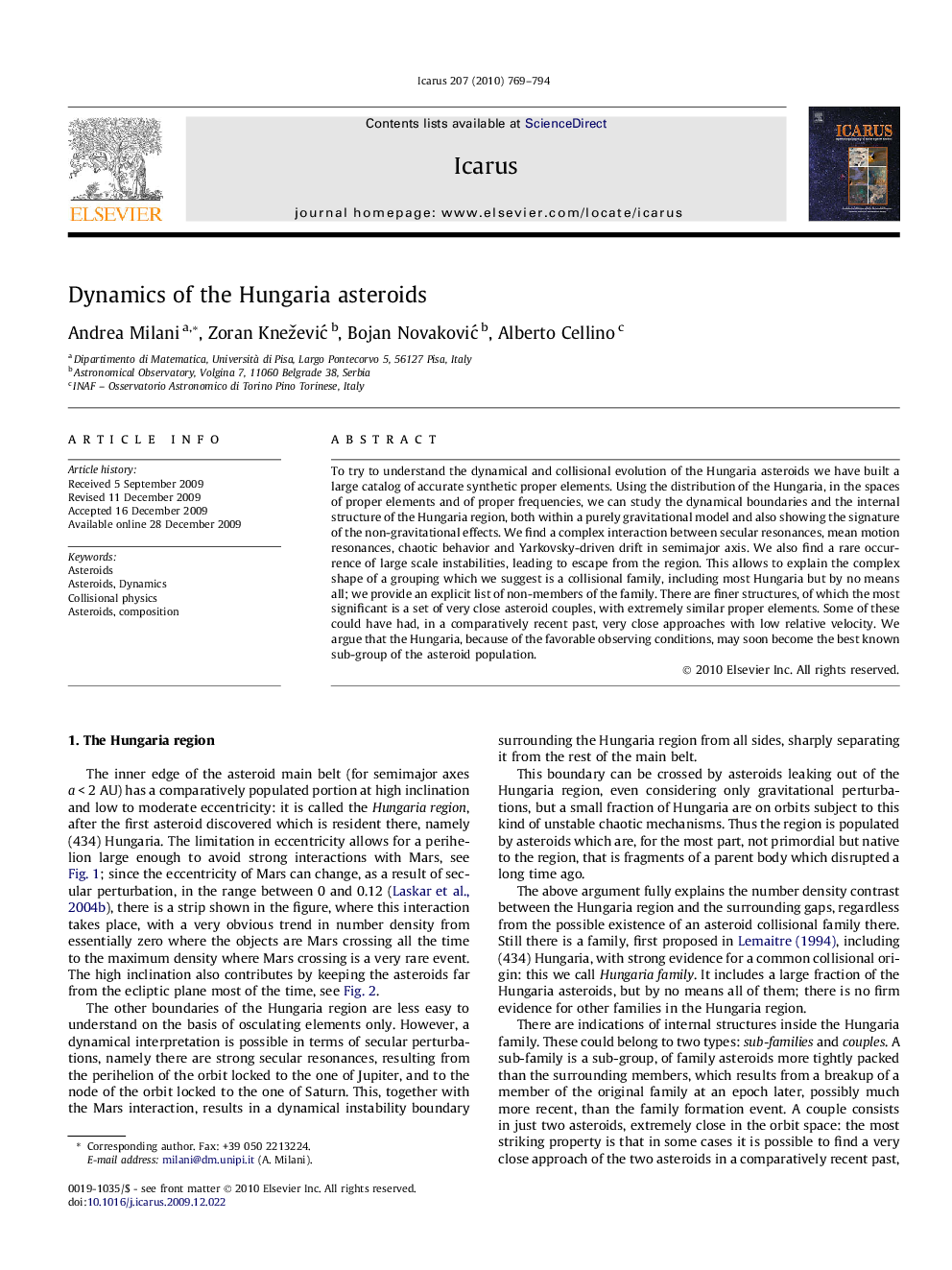| Article ID | Journal | Published Year | Pages | File Type |
|---|---|---|---|---|
| 1774283 | Icarus | 2010 | 26 Pages |
To try to understand the dynamical and collisional evolution of the Hungaria asteroids we have built a large catalog of accurate synthetic proper elements. Using the distribution of the Hungaria, in the spaces of proper elements and of proper frequencies, we can study the dynamical boundaries and the internal structure of the Hungaria region, both within a purely gravitational model and also showing the signature of the non-gravitational effects. We find a complex interaction between secular resonances, mean motion resonances, chaotic behavior and Yarkovsky-driven drift in semimajor axis. We also find a rare occurrence of large scale instabilities, leading to escape from the region. This allows to explain the complex shape of a grouping which we suggest is a collisional family, including most Hungaria but by no means all; we provide an explicit list of non-members of the family. There are finer structures, of which the most significant is a set of very close asteroid couples, with extremely similar proper elements. Some of these could have had, in a comparatively recent past, very close approaches with low relative velocity. We argue that the Hungaria, because of the favorable observing conditions, may soon become the best known sub-group of the asteroid population.
